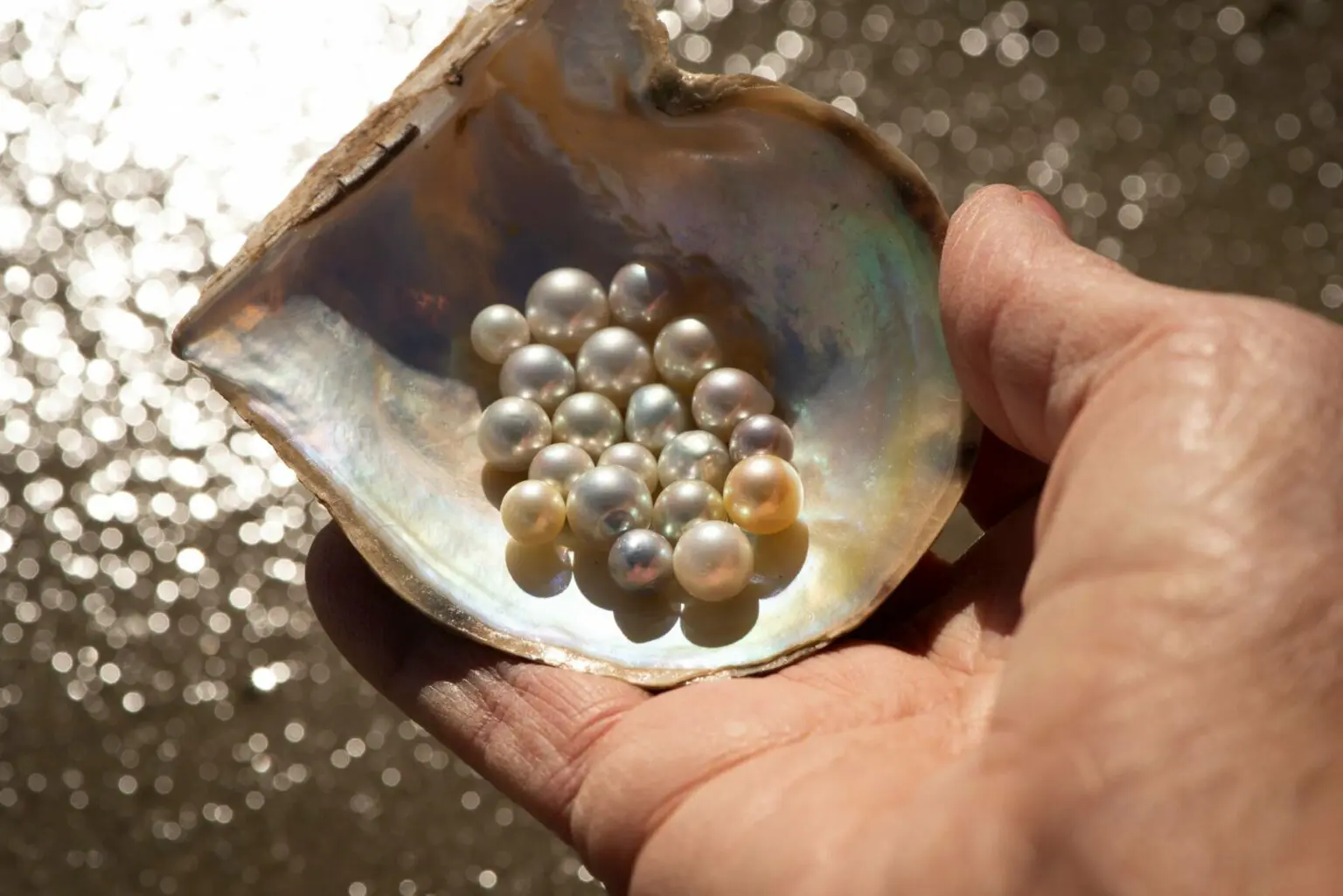Everything you need to know about Akoya Pearls

BY PEARLS OF AUSTRALIA
At Pearls of Australia we farm two types of pearls, the Pinctada maxima (Australian South Sea Pearl), and the Pinctada fucata (Akoya Pearl) which form part of the Akoya oyster complex. While the Akoya may be smaller than its Australian South Sea cousin, it still holds its own when it comes to the beautiful jewellery that these pearls are set into. In this article, we take a closer look at Akoya pearls and explain the difference between them and their generally larger counterparts.
Where are Akoya pearls found?
An Akoya pearl is a type of saltwater pearl that comes from the Akoya oyster. These oysters are mainly found in the colder waters off the coast of Japan, as well as Vietnam, Korea and Australia. China was a large producer of this pearl type, however, due to several factors, this is no longer the case.
One of the main reasons that so many of the world’s Akoya pearls come from Japan is because it was the Japanese son of a noodle store owner, Kokichi Mikimoto, (perhaps you recognise the surname?) who first learned how to consistently culture pearls. Mikimoto was then instrumental in creating the global cultured pearl industry, a remarkable story and one that we will cover in a future article. While their freshwater cousins average a whopping 20-50 pearls in a single culturing cycle, it would be a rare occasion where an Akoya pearl oyster would produce more than two.
How are Akoya pearls formed?
Akoya pearls are formed when a bead composed of shell and a small piece of mantle tissue is nucleated inside of an oyster. This bead becomes the nucleus of the pearl and is the reason that Akoya pearls are more often perfectly round. The oyster will coat the bead with nacre, a secretion produced by the oyster, to protect itself from irritation. Over time, the nacre will build up and form a pearl.
What size are Akoya pearls?
As the Akoya oyster is much smaller than the Pinctada maxima and is actually the smallest of all of the pearl-producing molluscs, this is one of the reasons Akoya pearls are generally smaller than South Sea pearls, with most Akoya pearls measuring between two and ten millimetres in diameter, compared to eight and twenty millimetres for South Sea pearls.
How expensive are Akoya pearls?
Regarding where Akoya pearls sit compared to the different pearl price points, they are neither the cheapest nor the most expensive pearl type. While you are likely to find them to be considerably more expensive than freshwater pearls, they do tend to be the least expensive of the saltwater varieties, so you should find them to be slightly less expensive than Tahitian pearls and considerably less expensive than South Sea and Australian South Sea varieties.
What colours do Akoya pearls come in?
The colour of Akoya pearls can vary from oyster to oyster, so while most people think of white pearls when they think of Akoya pearls, there are many other colours to choose from. This is because the colour of an Akoya pearl is determined by the environment and the diet of the oyster. Some of the different colours that Akoya pearls can include are white, cream, blue, and pink.
These different colours can suit a variety of other jewellery and clothing. For example, blue Akoya pearls can be worn with silver jewellery to create a dramatic look. White Akoya pearls can be worn with gold jewellery to create a classic look. And pink Akoya pearls can be worn with complementary colours to create a stylish look.
Do Akoya pearls have more lustre than other pearls?
The lustre of a pearl is one of the most important factors in determining its quality. Akoya pearls generally have more lustre than any other pearl type and their high level of shine is one of their main selling points. Lustre is defined as the amount of light that is reflected from the surface of a material. The higher the lustre, the more light is reflected, and the more brilliant the object appears. Lustre is important when choosing a pearl because it can make a big difference in how the pearl looks. Pearls with a high lustre will have brighter and sharper reflections than pearls with a low lustre. This means that high lustre pearls will often look more vibrant and beautiful than low lustre pearls.
While not all people may agree on what constitutes a “good” or “bad” lustre, most people would agree that a higher lustre is generally more desirable. This is because it makes the pearl look more natural and luminous, which can enhance its beauty. When choosing a pearl, it is important to consider the reflection, to make sure you are getting the best possible lustre.
What shapes do Akoya pearls come in?
The most common shape for Akoya pearls is round, but they can also be found in shapes such as button, drop, oval and baroque. Round pearls are the most popular because they are the most versatile and look good with any outfit. Drop pearls are long and elegant and look great on a necklace. Baroque pearls are more irregular in shape and have more personality than round or drop pearls. They can be used to create unique jewellery designs. Circle baroque pearls are like baroque pearls, but they have a round shape. They are also versatile and can be worn in any way you want.
How to style your Akoya pearls?
When it comes to styling your Akoya pearls, there are a few things to keep in mind. First, consider the colour of your pearls. If you have pink pearls, you’ll want to wear them with outfits that have pink accents. And if you have silver pearls, you can wear them with pretty much anything!
Another thing to think about is the neckline of your outfit. If you’re wearing a high neckline, pair your pearls with dangle pearl earrings or a simple pearl necklace. If you’re wearing a scoop neckline, try pairing your pearls with a statement necklace or bracelet.
No matter how you choose to style your Akoya pearls, they will always look elegant and sophisticated. We have a wide range of Akoya pearl earrings, Akoya pearl necklaces, Akoya bracelets, Akoya rings and Akoya pearl pendants to choose from, so feel free to browse our collection of Akoya pearls today.








